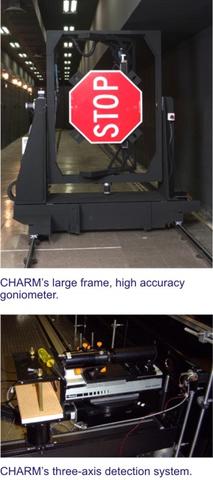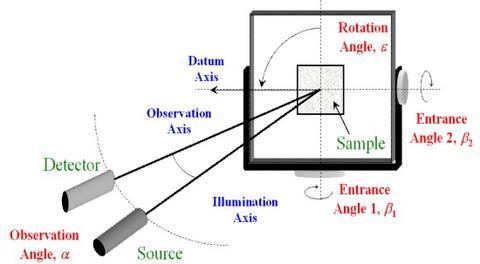Center for High Accuracy Retroreflection Measurements (CHARM)

In 1993, the United States Congress directed the U.S. Department of Transportation to establish "a standard for a minimum level of retroreflectivity that must be maintained for pavement markings and signs which apply to all roads open to public travel." The establishment of a national standard for minimum levels of retroreflectivity requires methods to accurately measure retroreflectivity. CIE has established procedural standards for measuring retroreflective traffic control devices. These standards ensure that the procedures used to measure retroreflectivity are consistent. They do not ensure that the instruments used are accurate. A need exists for calibration standards of retroreflectivity to establish a traceable method for determining the accuracy of measurements. Calibrated standards will significantly reduce the prospect of either incorrectly failing or passing materials. The adverse impact of the former is economic, while the later is on safety.
NIST was awarded a contract by the National Cooperative Highway Research Program (NCHRP Project 05-16) to develop a dedicated reference instrument for measuring retroreflective materials, and a calibration program that provides traceability to the relevant national scales maintained by NIST.
Retroreflection is reflection in which the reflected rays are preferentially returned in directions close to the opposite of the direction of the incident rays, this property being maintained over wide variations in the direction of the incident rays. The NIST CHARM facility is composed of three key elements: a projection source, a large frame high accuracy goniometer for positioning the sample, and a three axis detection system.

Calibration Service:
NIST provides calibration service for submitted retroreflective materials under NIST Test No. 37100 Special Photometric Tests. NIST can calibrate signage materials and pavement marking materials, for coefficient of luminous intensity, coefficient of retroreflection, and coefficient of retroreflective luminance. Please contact c.miller [at] nist.gov (Cameron Miller) to discuss details of test artifacts and obtain quotation for the requested calibration.
Selected Publication:
- National calibration facility for retroreflective traffic control materials, NCHRP Web-only Document 72 (Project 05-16)
Specifications/Capabilities
The CHARM facility has been analyzed and characterized for over forty different aspects that are components in the overall uncertainty budget for the calibration of retroreflective material including signage and pavement marking material. The typical calibration of a white encapsulated bead retroreflective sheeting material for coefficient of retroreflected luminous intensity is expected to have a relative expanded uncertainty of 2 % (k=2). The uncertainty will be somewhat higher, up to 3 % (k=2) for microprismatic and/or colored materials. Typical white or yellow pavement marking material will have a relative expanded uncertainty of 4 % (k=2).

